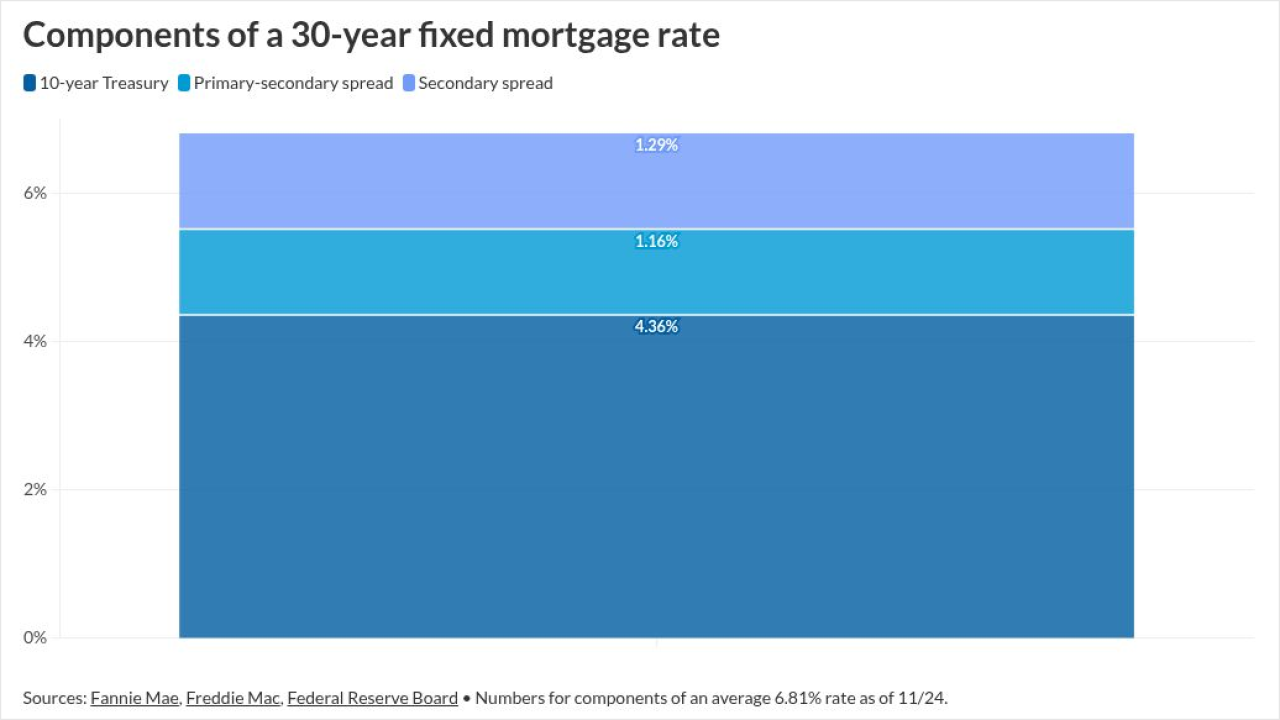Angel Oak took a net loss in the first quarter due to
The real estate investment trust, which invests in non-agency mortgages originated by its affiliates, took a net loss of $43.5 million, down from $3.1 million in
Volatility during the quarter negatively affected the value of loans, securitizations and other assets. The loss was a reminder of the sensitivity non-agency products can have to secondary market risks like those seen
However, thanks in part to effective interest-rate hedges and relatively strong portfolio returns Angel Oak was able to distribute $37.3 million or $1.49 per share in earnings to shareholders. (REITs are required to pay out at least 90% of their taxable income to investors.)
The REIT was able to continue growing its investments during the quarter and some improvement in the market has occurred since it ended, executives said in an earnings call Thursday.
“We are proud of the 113% growth of our target asset base and the continued execution of our loan acquisition, securitization and reinvestment strategy,” said CEO Robert Williams. “From our IPO through the end of the quarter, we have purchased over $2 billion of high quality non-premium loans, including $676 million in the first quarter.”
Angel Oak’s residential portfolio consists primarily of the kind of less rate-sensitive non-agency loans the mortgage industry has shown more interest in since traditional originations have fallen and margins thinned. A slim majority of these loans have credit profiles slightly below the bar for “prime,” more than one-third needed to be verified through bank statements rather than a more traditional means like a pay stub, and the balance are investor/non-owner occupied loans.
These loans generally have relatively higher returns and risk profiles than traditional mortgages, and may be underwritten outside the regulatory “qualified mortgage” definition, which serves as an indication that they meet
Angel Oak has an advantage over newer competitors trying to lend to borrowers like some of
“Extensive application, research and verification must be conducted for a non-QM loan, which creates a high barrier to entry,” Williams said.
Although rising interest rates put pressure on mortgage companies to loosen criteria as origination leads dry up, Angel Oak has maintained requirements for relatively low loan-to-value and debt-to-income ratios aimed at ensuring loans perform, he said.
“Our recently originated loans have higher average FICO scores and lower average LTVs and DTIs than in prior years,” he said.
A February securitization, for example, had the following weighted averages: FICO credit score, 744; LTV, 70.6%; and DTI, 32.7%. Generally, underwriters like loans to have at least a 20% down payment or around 30% if they make other exceptions, and DTIs below 50%.
When asked by analysts about securitization prospects going forward, executives said they consider the market favorable given improvements in conditions since the first quarter and rising rates that can increase the coupon available.
“What we are seeing is a somewhat stabilized securitization market,” said Nami Sinha, managing director and chief investment officer at Angel Oak. “The market was obviously very choppy in the first quarter, but there was a lot more volatility around March and April that seems to have subsided.”




